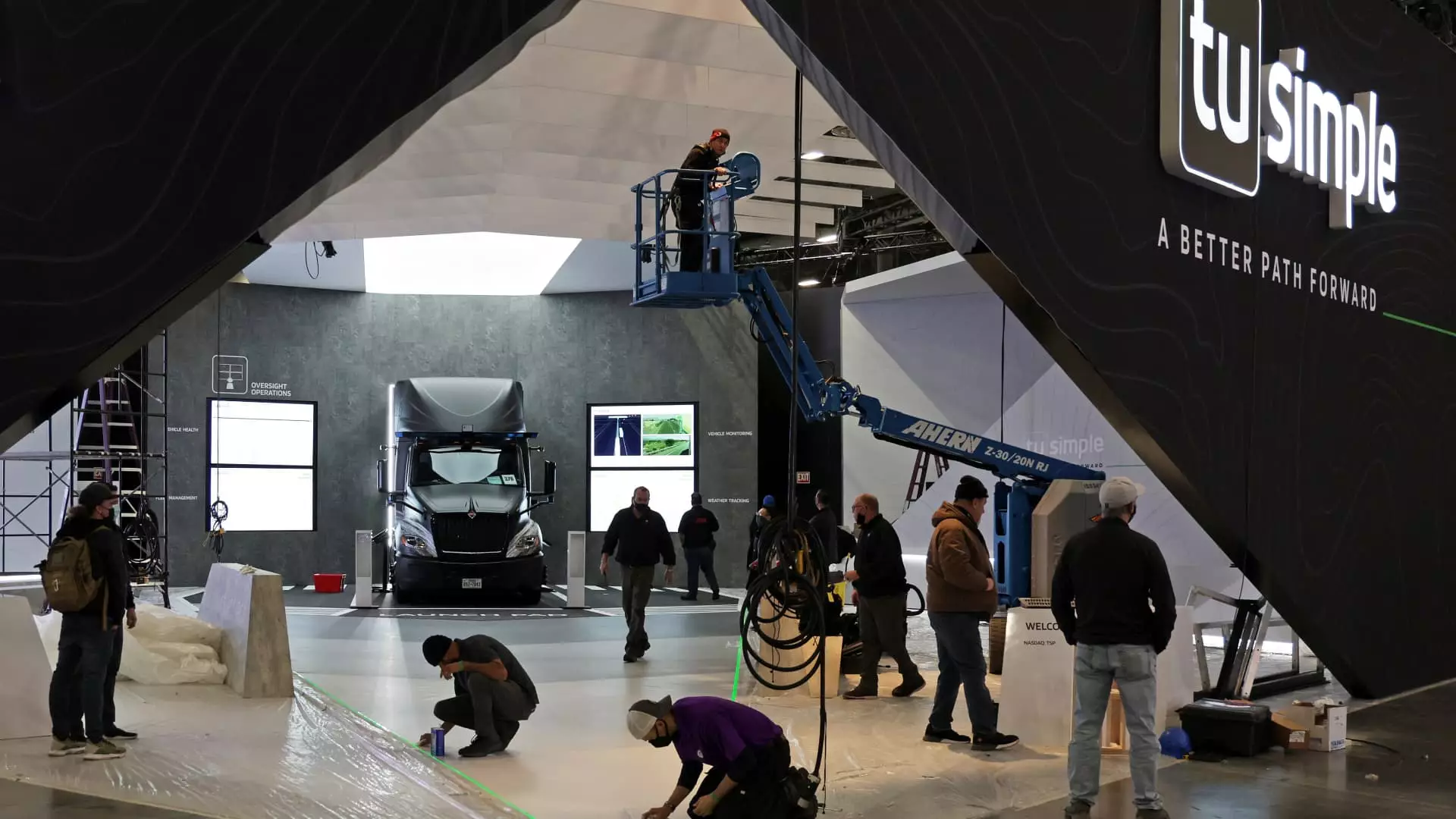In a significant shift within the tech landscape, the troubled Chinese autonomous trucking company TuSimple has announced a bold rebranding as CreateAI, diverting its focus towards the burgeoning fields of video games and animation. This move comes at a time when the self-driving sector has begun to unravel, as seen by General Motors’ recent discontinuation of its Cruise robotaxi venture. CreateAI’s transformation represents both a pivot in operational strategy and a reflection of the industry’s broader challenges.
Challenges and Changes in the Autonomous Sector
TuSimple has not escaped the myriad challenges facing autonomous trucking firms. Safety concerns regarding their vehicles have loomed large, coupled with a staggering $189 million settlement related to a securities fraud lawsuit. These predicaments culminated in the company’s delisting from the Nasdaq stock market earlier this year. TuSimple’s leadership, particularly CEO Cheng Lu, who returned to the company amid these trials, has expressed optimism about the new direction. Lu aims for the company to break even by 2026, driven by the anticipated release of a video game inspired by martial arts literary icon Jin Yong.
Such a timeframe suggests a significant departure not only from a once-promising self-driving vehicle business model but also underscores the volatility associated with startups in this high-stakes environment. With a history of losses—$500,000 in the first three quarters of 2023 alone—investors might be watching closely to ensure that this pivot translates into tangible financial results.
Cheng Lu envisions substantial revenue growth by 2027 with the full launch of the Jin Yong video game. The shift towards generative AI, which enabled successes such as OpenAI’s ChatGPT, showcases CreateAI’s intent to leverage its technological capabilities gained through its previous focus on autonomous driving. The brand has already released its first significant artificial intelligence model named Ruyi, an open-source tool for visual creatives, emphasizing the company’s commitment to innovation.
There is a noted synergy in the belief that foundational AI technologies applied in the realm of autonomous driving can lay the groundwork for advancements in generative AI. The application of machine learning and AI capabilities extends beyond the technical into the creative, with the potential to revolutionize video game production. Cheng stated an ambitious goal of reducing production costs of top-tier, or “triple A,” games by an impressive 70% within the next five to six years.
With aspirations to scale its workforce from 300 to about 500, CreateAI appears positioned for rapid expansion. The company recently announced a collaboration with Shanghai Three Body Animation to create an animated feature and a video game adaptation of the celebrated science fiction book series “The Three-Body Problem.” This alignment underlines a strategic focus on blending storytelling with cutting-edge technology, a hallmark of successful gaming enterprises.
Despite the challenges posed by U.S. restrictions on technological access relating to advanced semiconductor hardware, Cheng asserts that the company maintains a balanced cloud infrastructure. This flexibility allows CreateAI to better navigate the geopolitical landscape while pursuing international collaborations. The ambiguity surrounding potential dealings with entities like Tencent illustrates market intrigue as well as the complex web of business negotiations that define today’s tech industry.
As CreateAI embarks on this new journey, the overarching question remains: can this transformation from autonomous trucking to digital creativity yield sustainable success? While investors have expressed excitement for this pivot, the path is not without risks. The competition in the gaming industry is fierce, and the transition from one sector to another involves substantial hurdles including market acceptance and the inherent unpredictability of technological innovations.
Overall, CreateAI’s rebranding initiative is a calculated gamble reflecting both the challenges of the autonomous vehicle industry and the promising outlook of generative AI and digital entertainment. With its innovative vision and ongoing collaborations, the company could very well redefine its narrative within the tech ecosystem. The upcoming years will be crucial in determining whether this shift from vehicles to virtual worlds will secure a stable foothold in a rapidly evolving landscape.

